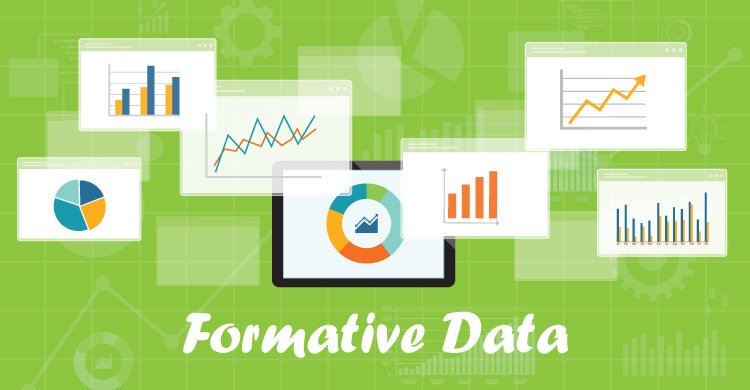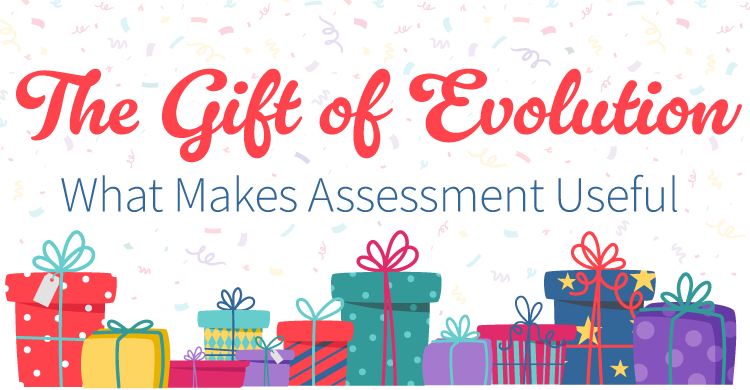The phrases formative assessment or formative data are not new to teachers and principals. But what do they really mean? How are they supposed to impact student and teacher learning? How do they strengthen the work of collaborative teams?
As a younger teacher, I remember seeing a flyer in my box sharing a new resource: “Best Math Formative Assessments!” When I looked at the examples, I thought, This just looks like a book of tests. What makes these special? The truth was … nothing. Later, I learned it is how assessments are used with students and teachers across a team that makes any assessment or lesson activity ripe for formative feedback and continued learning.
In fact, every course and grade-level subject tells a story. From the beginning of the year to its conclusion, what is the progression of learning? How does one unit of study impact the next? This helps frame the formative data needed by teachers and students to move learning forward.
Two questions emerge:
- Do teachers and students tell the same story of the learning throughout the year?
- How do assessments fit into the learning story of students and teachers throughout the year?
Too often class assignments and activities as well as assessments tell a story of ranking, sorting, or judging in the minds of students. Data is turned into summative information finalized in a grade book rather than an opportunity to learn from mistakes with an ability to show learning improvements. The challenge is to use feedback and data to turn those assessments into a meaningful part of a student’s learning experience. But how?
Gathering Formative Data
In the PLC culture, there are tight and loose actions. Tight actions include teams building a shared understanding of standards, creating student learning targets, developing common assessments, and collectively responding to student learning. Loose actions include the day-to-day teaching of standards. In all cases, teachers gather data to grow effective instructional practices and give meaningful feedback to students for goal-setting and continued learning. Both the tight and loose actions provide opportunities for teachers to gather and learn from formative data.
Daily classwork and team common assessments are both vehicles for providing meaningful feedback to students related to their learning. With time planned into lessons for descriptive feedback from peers or a teacher, daily classwork can allow students to take immediate action on the revisions in thinking needed. Team common assessments, on the other hand, provide evidence to students of their learning. This creates an opportunity for students to reflect on what has been learned or not learned yet, set goals, and make a plan to continue learning what is needed. Together, these vehicles contribute to the student’s learning story in the course.
The nature of formative simply focuses the gathering of information to be used by teachers and students to grow the learning of every student. As I work with collaborative teams, I find that too often they make the gathering of evidence of student learning more difficult than it need be. Kim Bailey and Chris Jakicic in Simplifying Common Assessment remind us that there is a doable process to design assessments that elicit the information needed for teacher and student learning.
A common assessment used formatively could be formal and generated as a short or longer formal assessment. It might also be observational in nature. What do you want to find out that students learned? How does your team gather the information and use it as part of as students’ learning story? While students are working on a task, determine what proficiency is with the task and what to observe. Create a walk-around tool and write the initials for students demonstrating proficiency. This can be data used by the team and the student for continued learning.
Some examples of assessments and learning experiences to be used formatively include:
| Examples of Team Common Assessments | Examples of Formative Assessment in Lessons |
|
|
Each example above provides an opportunity for meaningful feedback. Dylan Wiliam challenges us with this quote: “If our feedback doesn’t change the student in some way, it has probably been a waste of time” (Wiliam, 2016). Feedback is essential to a student’s learning story. That same feedback helps students set goals and determine what they have learned or not learned yet. How are students getting meaningful feedback in class and from their assessment evidence?
Using Formative Data
First and foremost, the data collected in class or through common assessments must be tied to a standard or student learning target if the feedback will be meaningful. Is the feedback designed to improve a student’s argumentative writing? Is the feedback designed to improve a student’s ability to use strategies to add fractions? Is the feedback designed to challenge a student to use primary source documentation in a US history project? What is the purpose of the feedback, and how will the student tie it to his or her learning story?
As such, teams start by identifying the standards students will learn and determine what it means for students to be proficient with each. Teachers can then use the data from common assessments and classwork to determine which instructional practices are working for student learning. Additionally, students can use the feedback by standard to determine next steps in their learning journey.
The classroom tasks that teachers choose determine the quality of both the feedback teachers can give students and the feedback students can give one another. Consider how to have students make their thinking visible for meaningful feedback. Consider how to clarify proficiency for students with rubrics and sharing of student work. How can students learn from one another in groups? How can opportunities be planned that allow students to exchange papers and give feedback? How can students revise their work for greater learning? Real-time feedback using formative data from classwork allows the student to make adjustments in thinking and continue learning.
For more formal common assessments, teacher teams can analyze the data by standard to determine next instructional actions. One protocol involves teachers placing student work into piles by category. They can look at the work of students who are proficient, close to proficient, and far from proficient. From there, they can identify trends in student work for each group and make a targeted plan for re-engagement for each group of students.
In both cases, something is done with learning data. It is used in a formative way to grow the learning of students. With the targeted and specific feedback, students can reflect on their learning by standard or target. They are able to identify what they have learned or not learned yet and can set goals and make a learning plan.
What is the story of your course? How do students describe their learning story? Consider how to use class and assessment data of student learning in a formative way—to empower students to own their learning and to grow teachers’ instructional practices. Together, using formative data, we can help students tell their learning story through the lens of assessments and classwork tied to standards.
References:
Wiliam, D., (April 2016) “The Secret of Effective Feedback,” Educational Leadership, 73(7), p. 14.
Bailey, K. & Jakicic, C. (2016) Simplifying Common Assessment. Bloomington, IN: Solution Tree Press.8[author_bio id=”354″]






